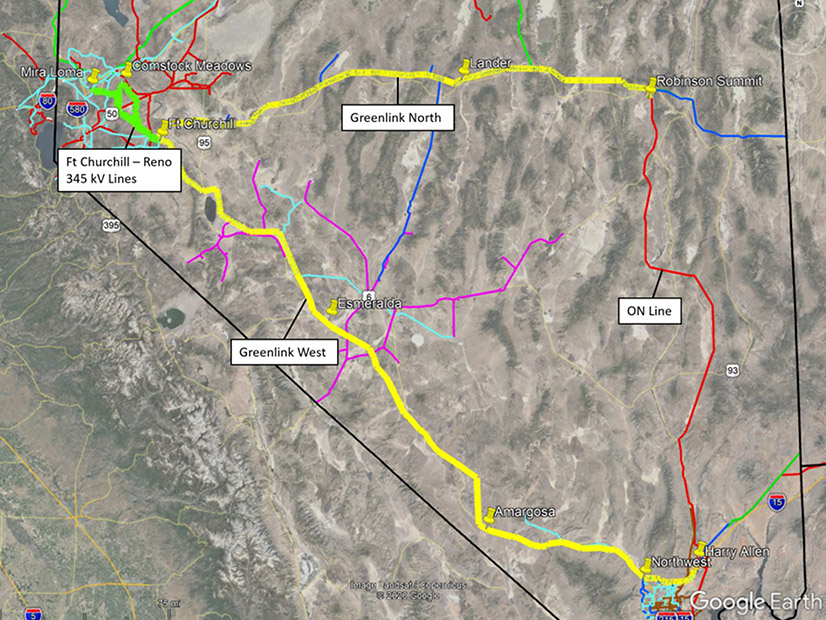
NV Energy filed an application last week to build a 235-mile transmission line across northern Nevada — a $901 million project that would complete a transmission triangle around the state.
The Greenlink North project would run from Robinson Summit near Ely in eastern Nevada, to Fort Churchill near Yerington.
The 525-kV transmission line would ultimately connect NV Energy’s existing One Nevada line, which runs down the east side of the state, to Greenlink West, a yet-to-be-built line along the west side of the state. Greenlink West and One Nevada will meet in the Las Vegas region.
The Public Utilities Commission of Nevada in March approved construction of Greenlink West. NV Energy expects construction to be completed by the end of 2026.
In its application to build Greenlink North, NV Energy said its renewable portfolio has relied heavily on solar resources in Clark County because of transmission constraints.
“The presence of Greenlink North opens vast areas to other renewable energy resource development, as well as new geographically diverse solar resources,” the company said.
The Greenlink project will also increase electric reliability throughout Nevada, create jobs and help the state’s economy recover from the impacts of the COVID-19 pandemic, NV Energy said in a news release.
Legislative Mandate
NV Energy filed its application for Greenlink North last week as an amendment to the utility’s 2021 integrated resource plan. The transmission proposal is also called the Transmission Infrastructure for a Clean Energy Economy Plan (TICEEP).
NV Energy was required to file the TICEEP by Sept. 1 as part of Senate Bill 448, a wide-ranging energy bill that the state legislature passed in May. And SB448 requires the PUCN to accept the TICEEP as long as it meets certain requirements. (See Far-reaching Energy Bill Sweeps Through Nev. Legislature.)
Sen. Chris Brooks (D), who introduced SB448, said previously that one of the bill’s goals was to speed up completion of the Greenlink network, which in turn could spur other transmission projects.
Although the PUCN in March approved conceptual designs, permitting and land acquisition for Greenlink North, Brooks said SB448 adds certainty that construction of the project will be approved. The goal is to have Greenlink North in service by Dec. 31, 2028.
Meeting Demand
TICEEP includes another transmission component specified by SB448: a 32-mile, 525-kV line just north of Las Vegas. The line will follow an existing transmission path from the Harry Allen substation to the Northwest substation, through a federally designated renewable energy transmission corridor.
NV Energy said the line would potentially allow a second 525/230-kV transformer at the Northwest substation to serve increased demand in Las Vegas. The new line would also give the Las Vegas area greater access to renewable resources, the utility said.
“Without this line, new solar and geothermal resources located near Greenlink West may be constrained due to transmission limitations into the Las Vegas Valley, thereby impeding development of those renewable resources,” NV Energy said in its filing.
The utility estimated the cost of the Harry Allen to Northwest line at $143 million.
NV Energy noted in its filing that its proposal does not analyze alternatives to Greenlink North and the Harry Allen to Northwest segment because the legislature directed the utility to evaluate only the two projects.
RTO Mandate
Another section of SB448 will require transmission providers in Nevada to join a regional transmission organization by Jan. 1, 2030, unless the provider can show that such a move isn’t feasible.
NV Energy said in its filing that it plans to participate in a task force that will evaluate potential benefits of joining an RTO.
“[NV Energy] will continue to explore energy market possibilities that could benefit their customers and the state of Nevada,” the utility said. “However, it is too early to make any recommendation to joining an RTO.”


